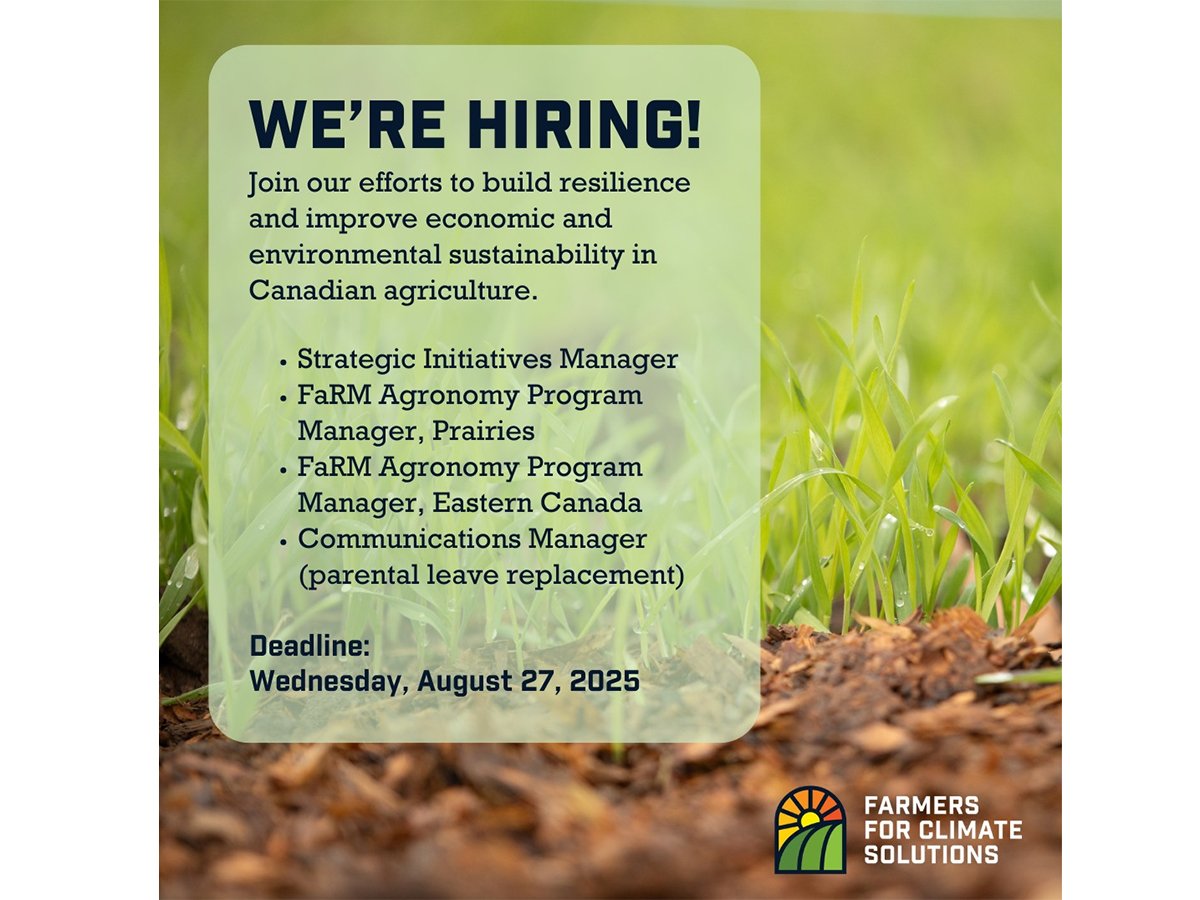While ranchers may manage their fields differently, most know the value of healthy soils.
Many ranchers are working toward building pastures that produce better forages, which means better weight gains for their cattle and more money in their pockets.
“We’ve learned that if we can do something, even little things, it can really increase your production,” said Bill Wilson, who ranches in the Peace Region near Dawson Creek, B.C., and Bonanza, Alta.
Wilson and other ranchers were speaking at the Western Canada Conference on Soil Health and Grazing held last month in Edmonton.
Read Also

Environmental farm group has Ottawa’s attention
In 2021, Farmers for Climate Solutions published a report on how Canada should reduce emissions from agriculture. Not long after, the federal government implemented most of the recommendations in the report.
Wilson and pasture manager Julie Robinson manage about 200 head on 1,800 acres of mostly rented land.
When Robinson came into the picture, she noticed many bare spots on the pasture and not as much growth as she would’ve liked. Lots of the land before had been primarily used for hay production and it eventually wore out.
“In the area, land was cheap,” Wilson said. “So, if people needed more grazing land, they would just go buy or rent more land, and it’s not that way anymore.”
They both got to work. They installed fences, added new water systems and bale grazed — trying to keep the cattle out on pasture as long as they could without overworking the land.
Robinson said she noticed that bale grazing even for just one year improved her soils.
“That’s been our approach on the ranch, to do a little bit at a time. Let’s not fix the world because we can’t afford to do everything at once, so we’ll just make it work for us,” she said. “We don’t expect change overnight. It’s a 10 to 20 year plan.”
Other ranchers at the conference said they generally approach upgrades in the same way.
Graeme Finn, who ranches near Madden, Alta., gets his cattle to graze all year round.
In the spring, the animals spend about six weeks working native land that has never been broken. After that, they’re moved to pastures with lots of legumes.
Calving continues into June, and then throughout the summer the cattle are rotated through different areas of the pasture. They spend 16 to 20 days grazing in sections fenced with hot wire.
When it’s winter time, the cow-calf pairs swath graze while the bulls bale graze.
“We’re averaging about a pound a day for the calf and we’re not taking anything off the cow, so it’s working out pretty well for us,” he said.















